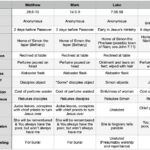The phrase “a lot” is a common way to intensify comparisons in English. It adds emphasis to comparative adjectives and adverbs, indicating a significant difference in degree. This article explores how “a lot” modifies comparatives, providing examples and analyzing common usage patterns.
Understanding “A Lot” with Comparatives
“A lot” functions as an intensifier, similar to words like “much” or “very,” but specifically with comparative forms. It highlights a greater extent of difference between two things being compared.
For example:
- Simple Comparative: This task is easier.
- Intensified Comparative: This task is a lot easier.
The addition of “a lot” emphasizes that the difference in difficulty between the two tasks is substantial. This construction applies to both predicative adjectives (following a linking verb like “be”) and adverbs.
Common Usage Patterns
A corpus analysis reveals prevalent patterns of “a lot” with comparative adjectives and adverbs. The most frequent combinations include:
- “is a lot easier”: This phrase tops the list, highlighting the common usage of emphasizing ease or simplicity. Variations like “was a lot easier” and “‘s a lot easier” (contraction of “is”) also rank high.
- “is a lot cheaper”: Cost comparisons frequently utilize “a lot” to denote a significant price difference.
- “is a lot harder/tougher”: Difficulty and challenge are often underscored with “a lot” before comparatives like “harder” and “tougher.”
- “take a lot longer”: Duration comparisons frequently employ this phrase to express a considerable time difference.
These patterns demonstrate the versatility of “a lot” in emphasizing comparative forms across various contexts.
Examples with Different Adjectives
Beyond the most frequent examples, “a lot” enhances comparisons with a wide range of adjectives:
- Size: “The new house is a lot bigger than the old one.”
- Quality: “This fabric is a lot smoother than that one.”
- Appearance: “She looks a lot nicer with her hair down.”
- Intelligence: “He’s a lot smarter than he appears.”
- Strength: “The new material is a lot stronger than the previous version.”
These diverse examples showcase how “a lot” effectively intensifies comparative adjectives across various descriptive categories.
“A Lot” with Comparative Adverbs
While primarily used with adjectives, “a lot” can also modify comparative adverbs:
- “He works a lot harder than his colleagues.” (modifying the adverb “harder”)
- “The car runs a lot smoother after the tune-up.” (modifying the adverb “smoother”)
Conclusion
“A lot” plays a crucial role in amplifying comparative adjectives and adverbs, signaling a substantial difference in degree. Understanding its usage patterns and applying it correctly allows for clearer and more emphatic communication when making comparisons. By incorporating “a lot” strategically, you can effectively convey the magnitude of difference between two things.
